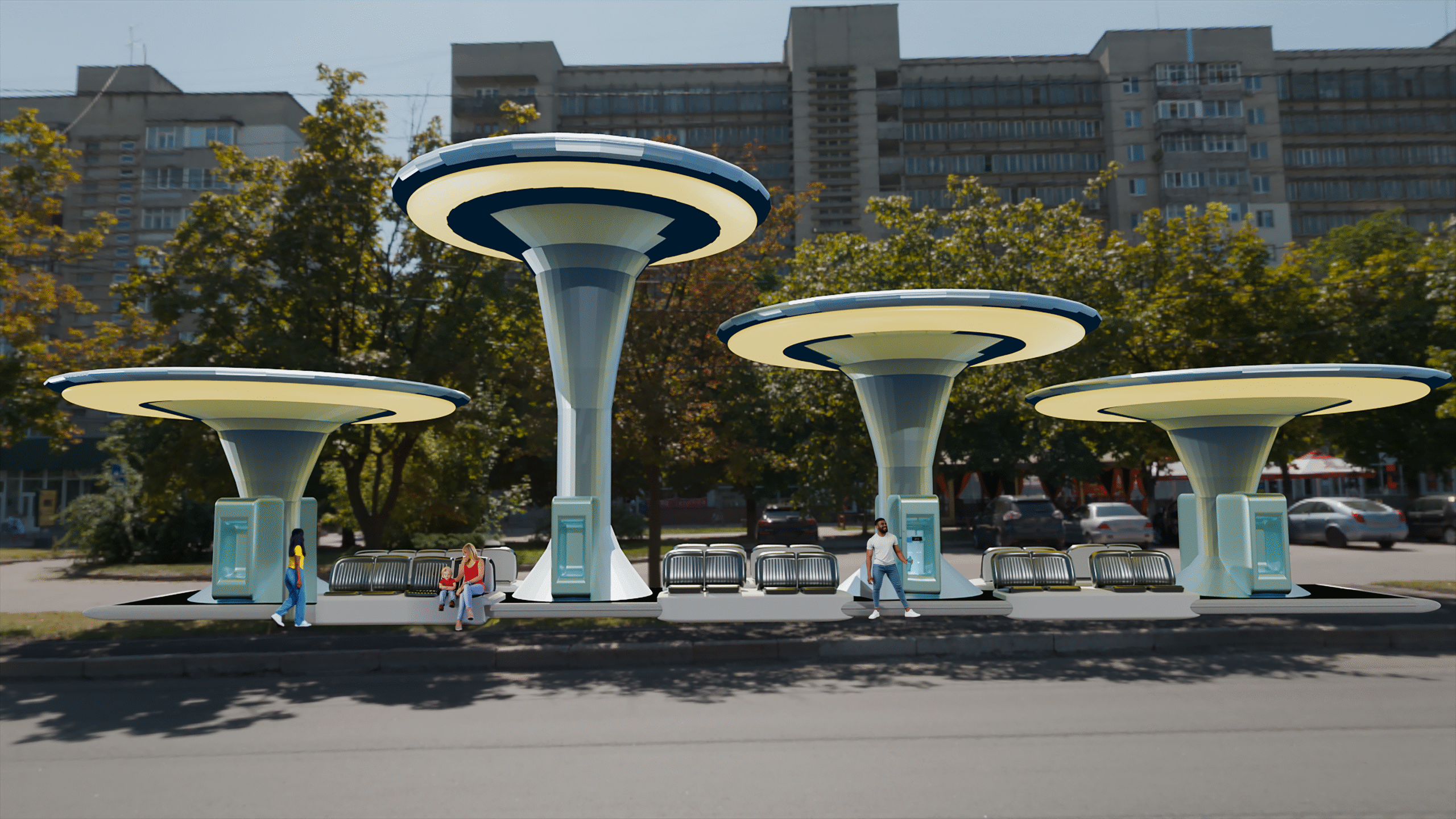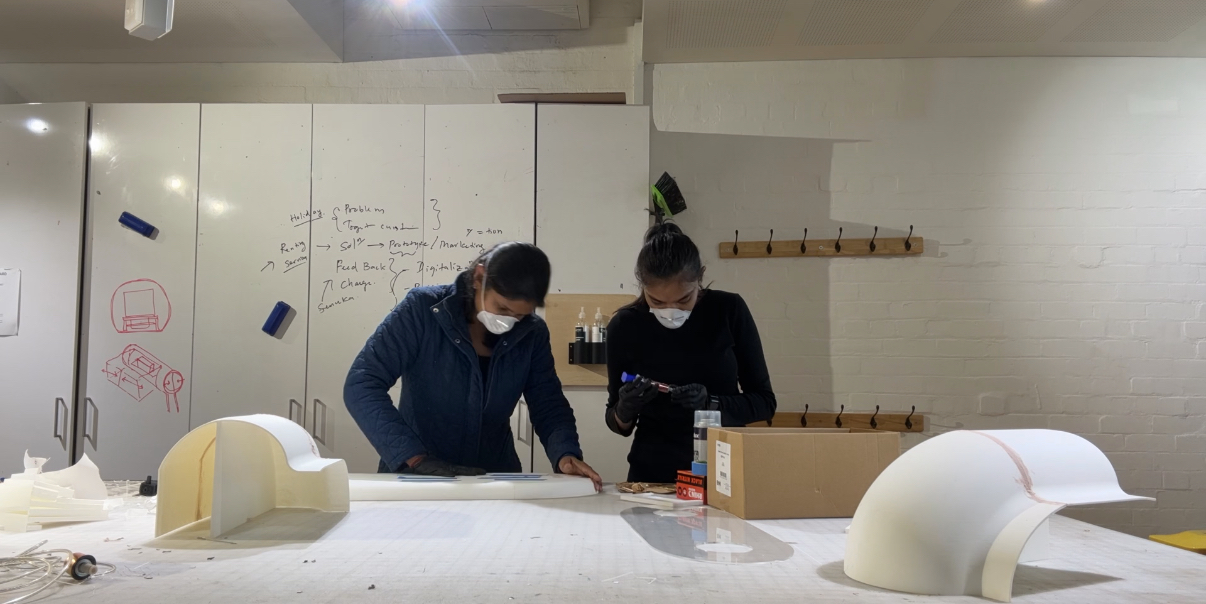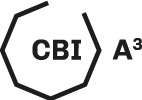Reimagining Water Access in the Age of Contamination
In an era defined by environmental volatility, aging infrastructure, and industrial pollutants like PFAS infiltrating our most basic resources, we asked:
What does resilient water access look like in 2050 and how can we begin building it today?
This project began as a response to the growing crisis of PFAS (Per- and Polyfluoroalkyl Substances) contamination in drinking water a complex and persistent environmental threat that traditional systems are struggling to address. But it quickly became more than that. It evolved into a comprehensive exploration of decentralized water futures, public trust, technological adaptation, and the fundamental human right to clean water.

This project began as a response to the growing crisis of PFAS (Per- and Polyfluoroalkyl Substances) contamination in drinking water—a complex and persistent environmental threat that traditional systems are struggling to address. But it quickly became more than that. It evolved into a comprehensive exploration of decentralized water futures, public trust, technological adaptation, and the fundamental human right to clean water.
After months of research, ideation, prototyping, and iteration, our team delivered a dual-solution system: Aerozen and Oasis Hubs—two interconnected, future-ready responses that together form a scalable, adaptive, and human-centered response to systemic water insecurity.
The Dual-Model Design: Local Solutions at Personal and Community Scale


Aerozen: Personal-Scale Water Sovereignty
Aerozen is a compact, countertop atmospheric water generator (AWG) designed for domestic and small-scale commercial use. Drawing moisture directly from the air, it produces 7 liters of PFAS-free, potable water per day—enough to meet the essential drinking needs of individuals and small households. It plugs into a standard outlet, operates quietly, and is optimized for urban apartments, offices, classrooms, and disaster shelters.
Aerozen is not just an appliance—it’s a statement of independence from compromised infrastructure. Designed with intuitive UX, minimal maintenance requirements, and low energy draw, it offers people control over their daily water intake regardless of tap quality or centralized system failures.

Oasis Hubs: Community-Scale Infrastructure for the Margins
Oasis Hubs are solar-powered, modular public water access stations built for underserved, vulnerable, or infrastructure-poor communities. Designed for deployment in parks, schoolyards, refugee settlements, and urban peripheries, each unit delivers up to 100 liters of clean drinking water daily, serving the equivalent of 100 people per day.
Engineered for resilience and autonomy, these hubs require no grid connection. Instead, they operate entirely off renewable energy, pairing atmospheric water generation with real-time environmental sensors that track air quality, water output, and community usage. This allows for predictive maintenance, transparent reporting, and agile scaling in emergencies.
Together, Aerozen and Oasis Hubs form a decentralized water ecosystem that resists disruption, supports equity, and reinforces public trust.
Human-Centered Technology: Bridging Infrastructure and Imagination
A key insight emerged early in our process: technology alone cannot solve a problem this big. Public perception, behavior, and trust play a vital role in water use and acceptance of new systems.
That’s why we developed Immersion a public engagement and education platform that runs parallel to our technical solutions. Immersion is designed to demystify PFAS, foster dialogue, and catalyze a cultural shift toward water consciousness.
Immersion: Engaging Minds Through Media
Immersion combines:
-
Virtual reality simulations of future water scenarios (from climate-impacted megacities to thriving decentralized systems),
-
Interactive podcasts that feature voices of scientists, water justice advocates, and local residents,
-
Community storytelling kits that invite people to document their own experiences with water contamination and access.
These immersive elements foster emotional connection and participatory learning, shifting the narrative from fear and helplessness to empowerment and action.
Immersion transforms users into stakeholders in their own future, making water literacy and climate resilience not only accessible but culturally resonant.

From Idea to Impact: Design Principles That Guided Us
Our solution wasn’t built in isolation. It emerged from extensive stakeholder engagement, scenario planning, and iterative co-design sessions with affected communities, climate researchers, engineers, public health experts, and policymakers.

Along the way, we developed several guiding principles that now shape our roadmap for long-term implementation:
-
Design for Uncertainty
We cannot predict the exact form of the next crisis, but we can build systems that bend without breaking. Aerozen and Oasis Hubs are modular, mobile, and energy-diverse, making them ideal for changing environmental conditions and emergency deployments. -
Local Resilience, Global Relevance
Though prototyped in the Australian context, both solutions are globally scalable. Any region facing rising temperatures, water stress, or infrastructure decay can adapt them to local needs. -
Accessibility as a Core Value
Both Aerozen and Oasis Hubs are designed to be inclusive: from their low barrier to use, to multi-language instructions, to their focus on affordability through public-private partnerships and open licensing. -
Replace, Not Repair
We took a bold stance: rather than patching broken systems, we built clean, resilient alternatives from the ground up unencumbered by legacy failures and ready for a radically different future.

Looking Ahead: A Scalable Framework for 2050 and Beyond
Aerozen and Oasis Hubs are ready for deployment today in homes, schools, emergency shelters, and cities grappling with water contamination. But they are also designed to scale into 2050, where water scarcity will be a defining challenge of human survival.
Whether used by local councils, nonprofits, emergency responders, or governments planning climate adaptation infrastructure, our dual model allows for incremental rollout or system-wide transformation.

Key Learnings and Reflections
Technology + Storytelling = Impact
Tech alone cannot solve systemic challenges. By embedding storytelling into the rollout, we fostered emotional engagement and civic action turning passive recipients into active participants.
Infrastructure Flexibility Is Non-Negotiable
Rigid, centralized systems are fragile. Our work shows that flexible, localized infrastructure can meet needs more reliably and more equitably.
Innovation Isn’t Always Fixing Sometimes It’s Replacing
We don’t need to keep repairing contaminated, failing systems. Sometimes the best path forward is to let go of what’s broken and build anew.




Quote of the Week
“Innovation doesn’t always mean fixing broken systems—it can mean replacing them entirely.”
— Swin Serpents





Recent Comments